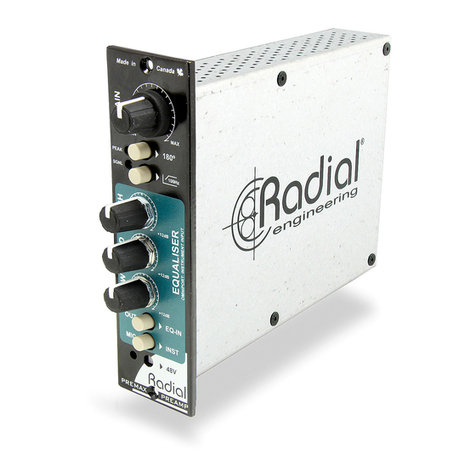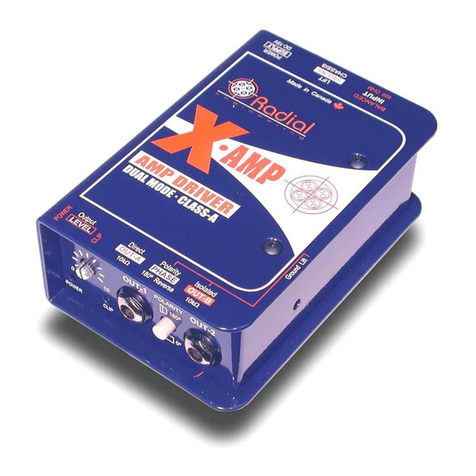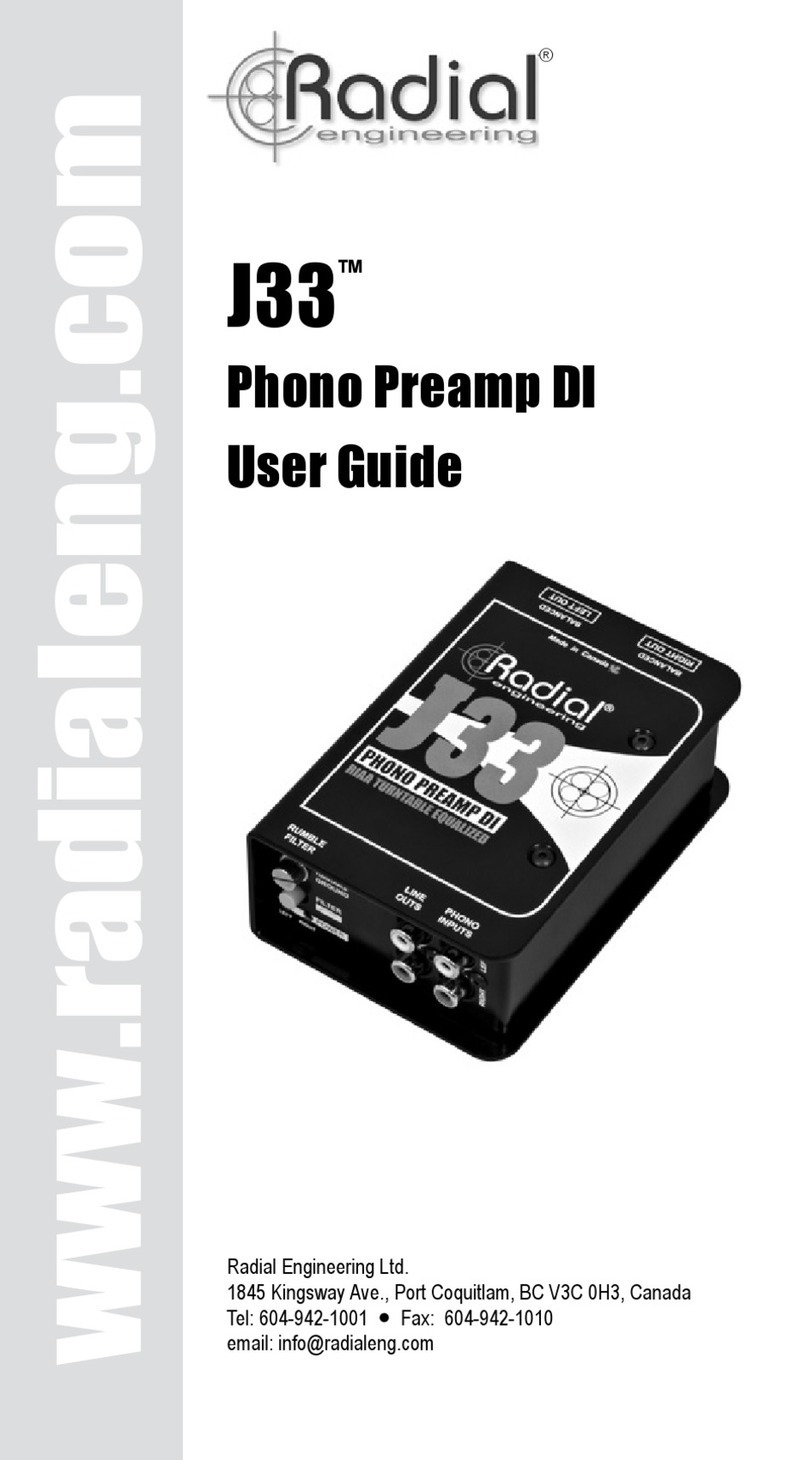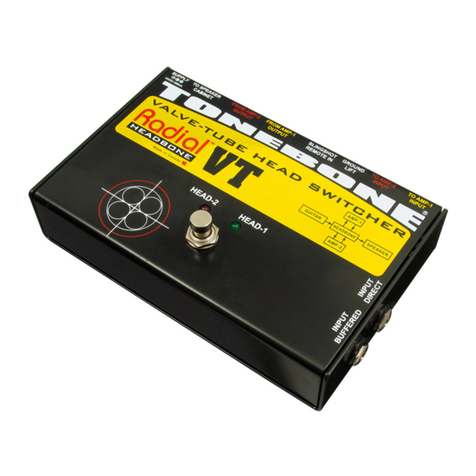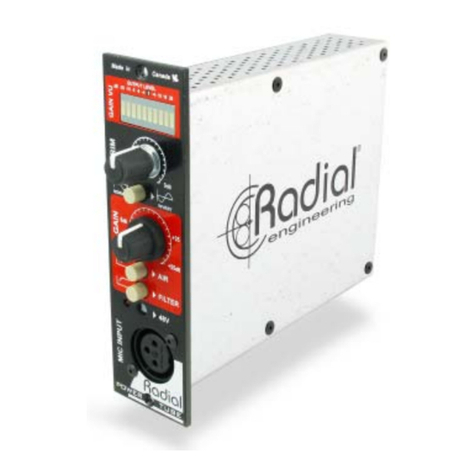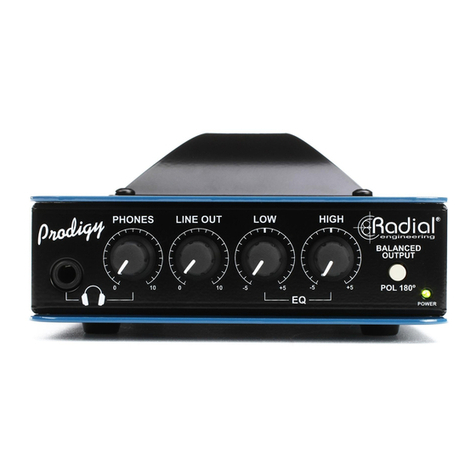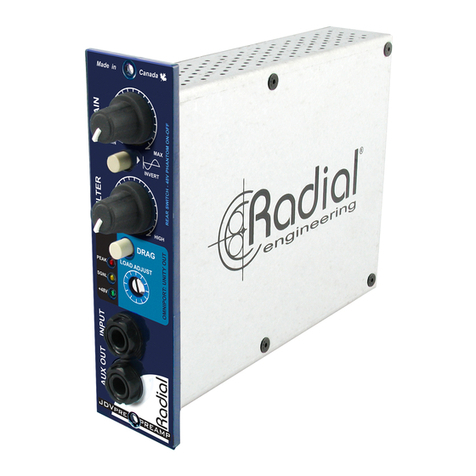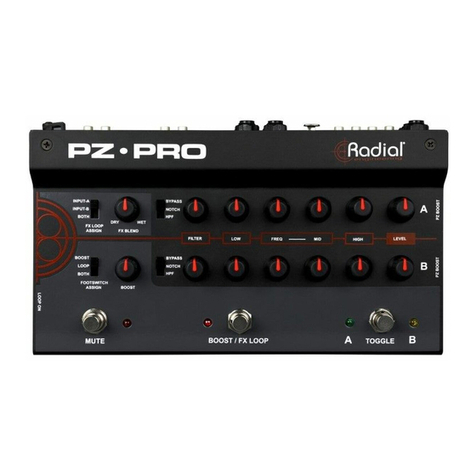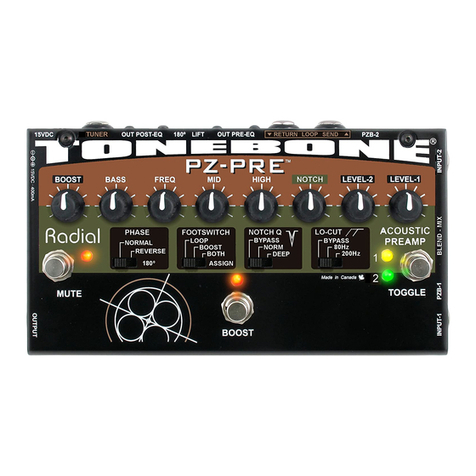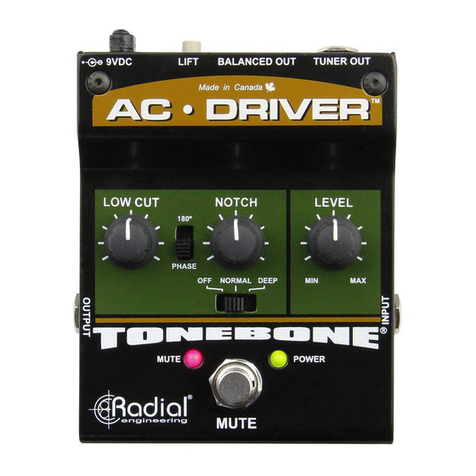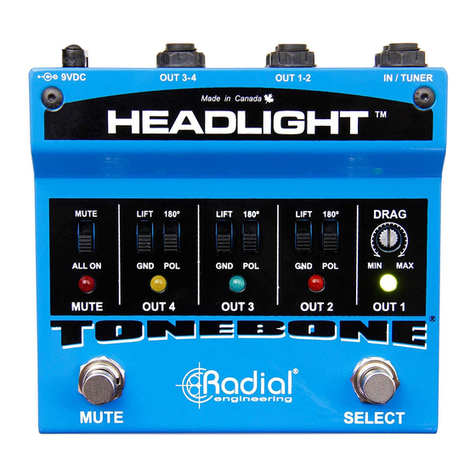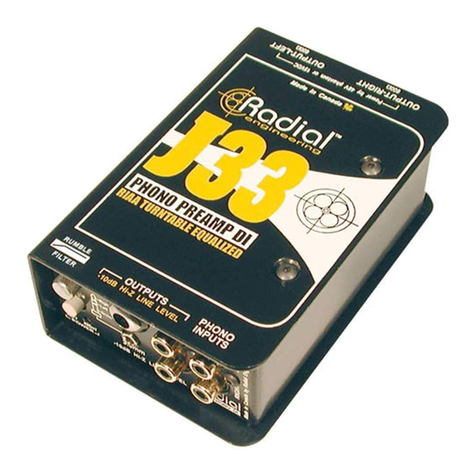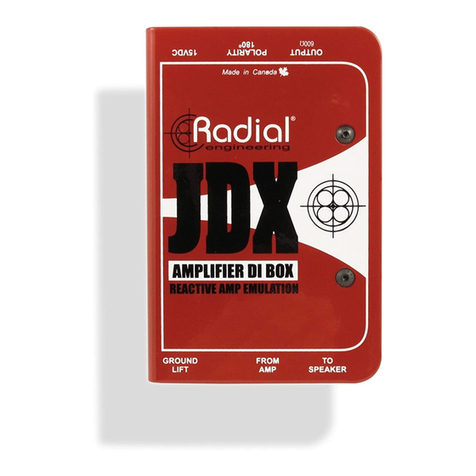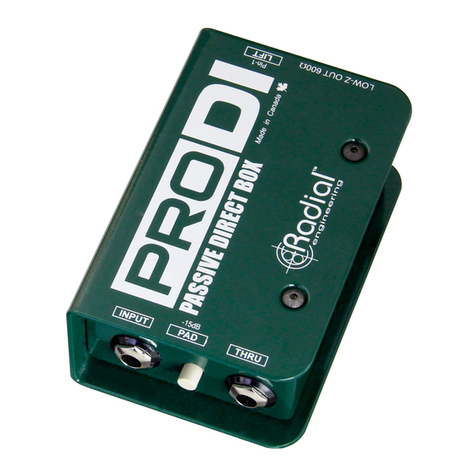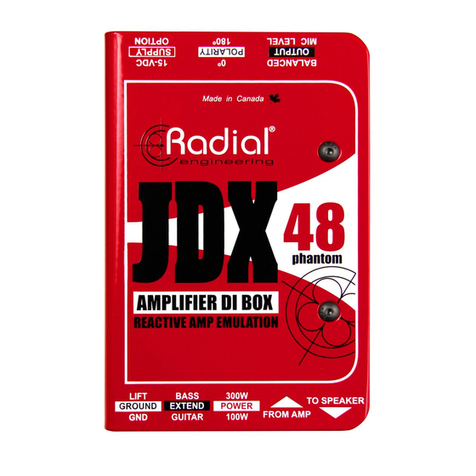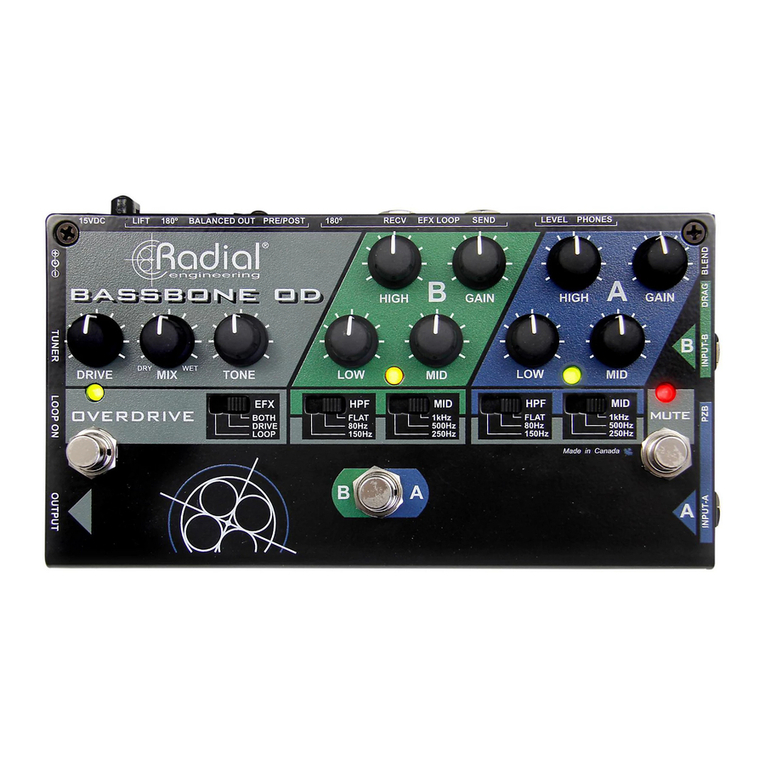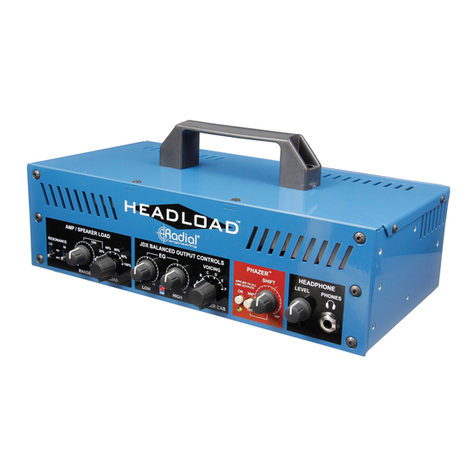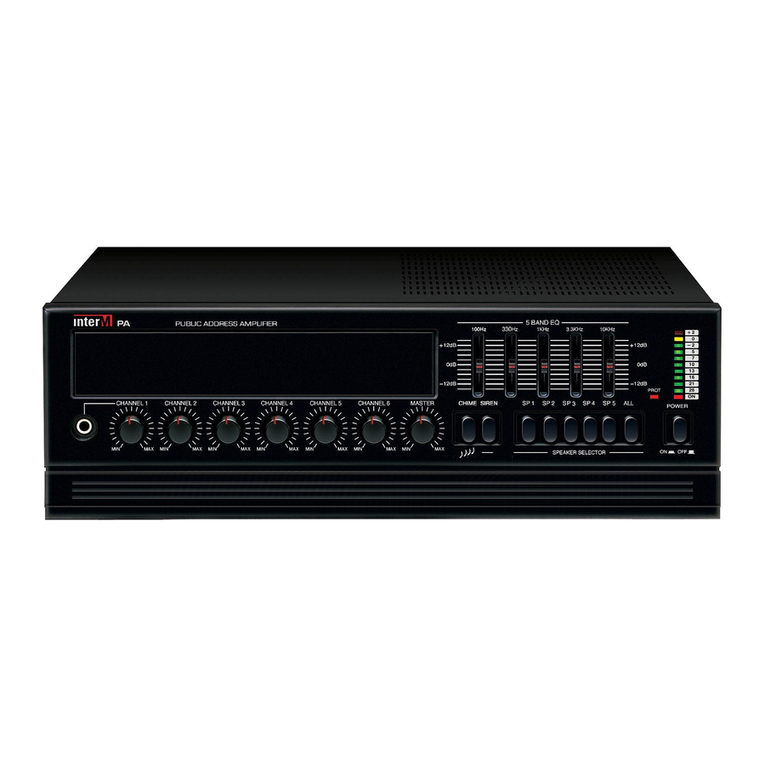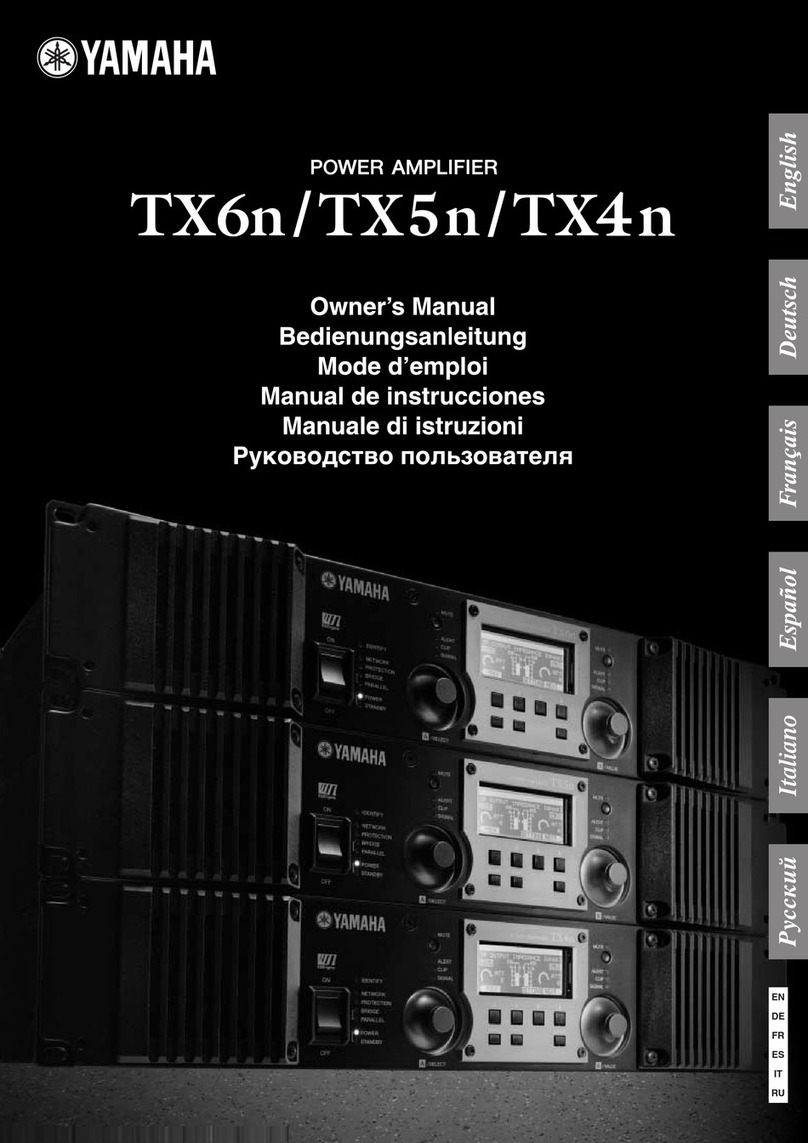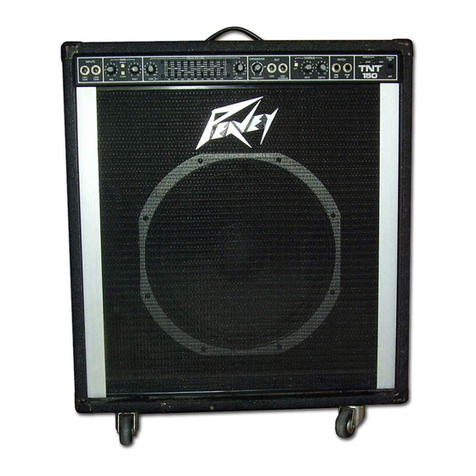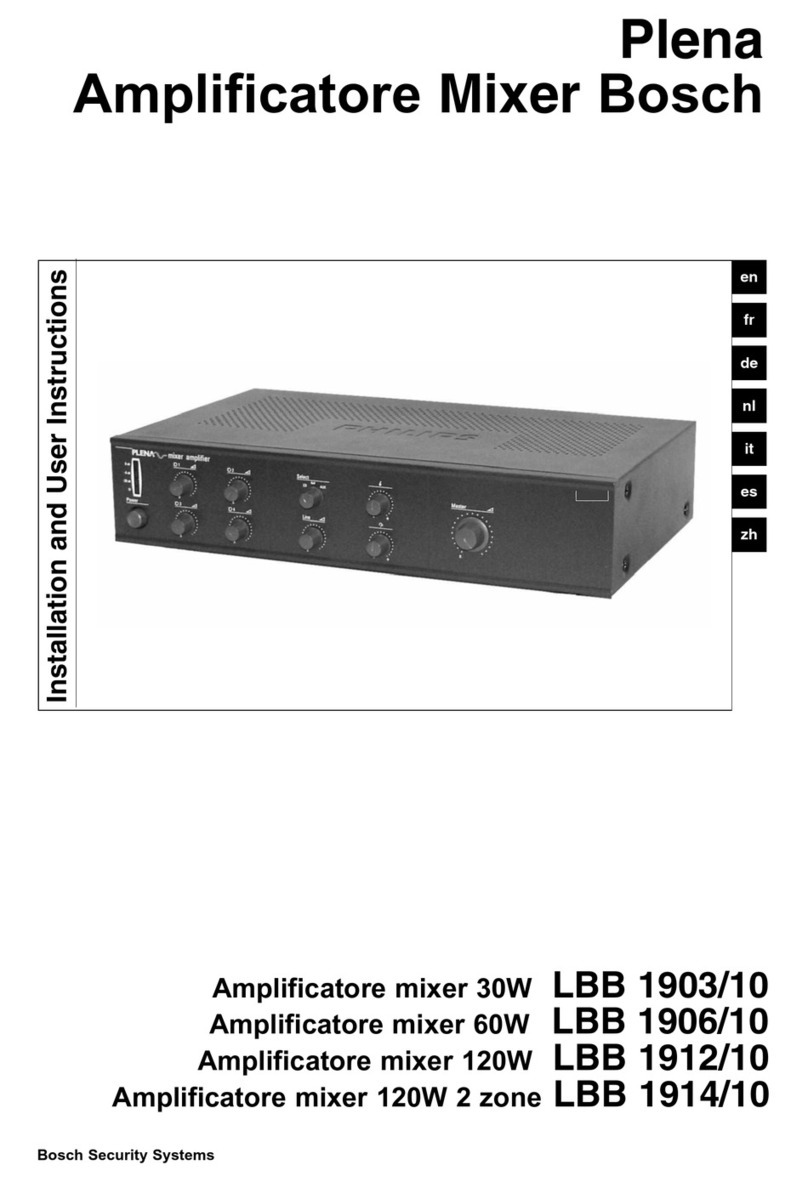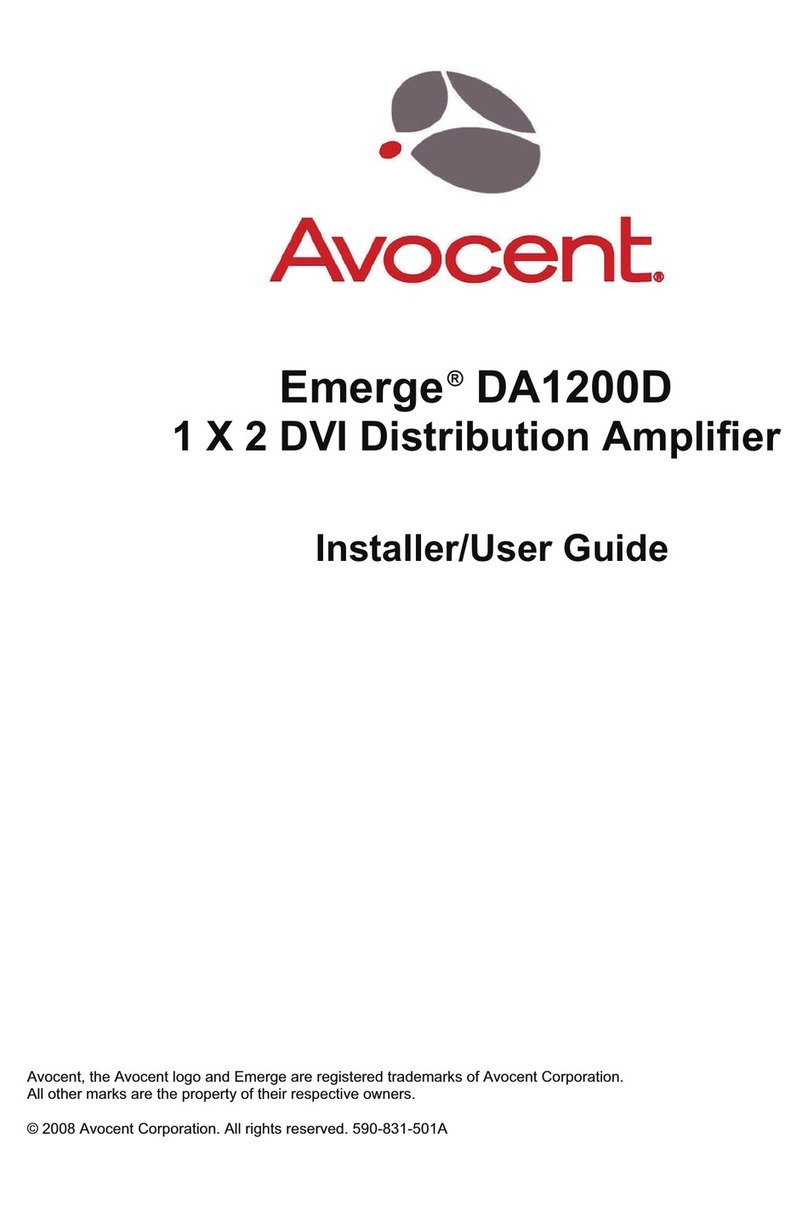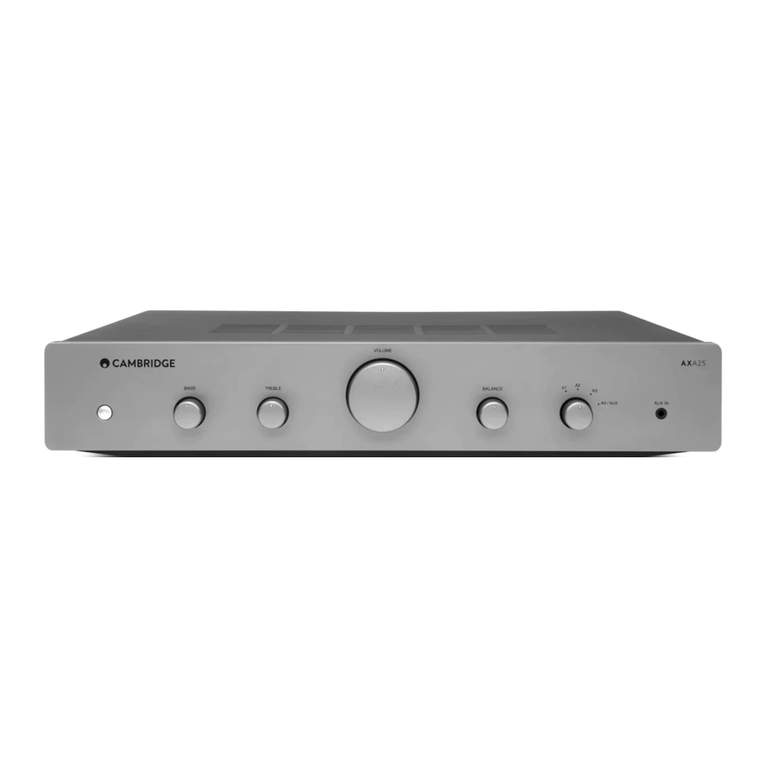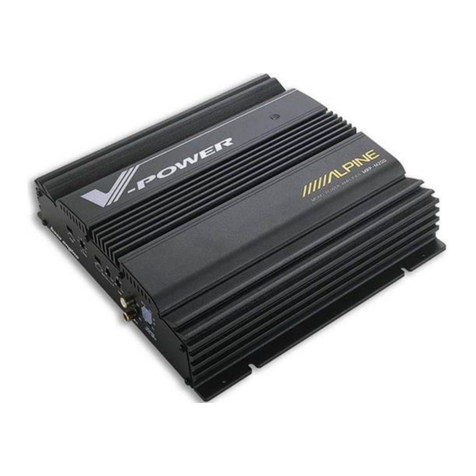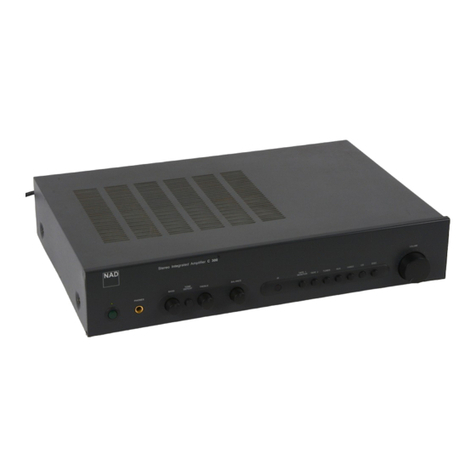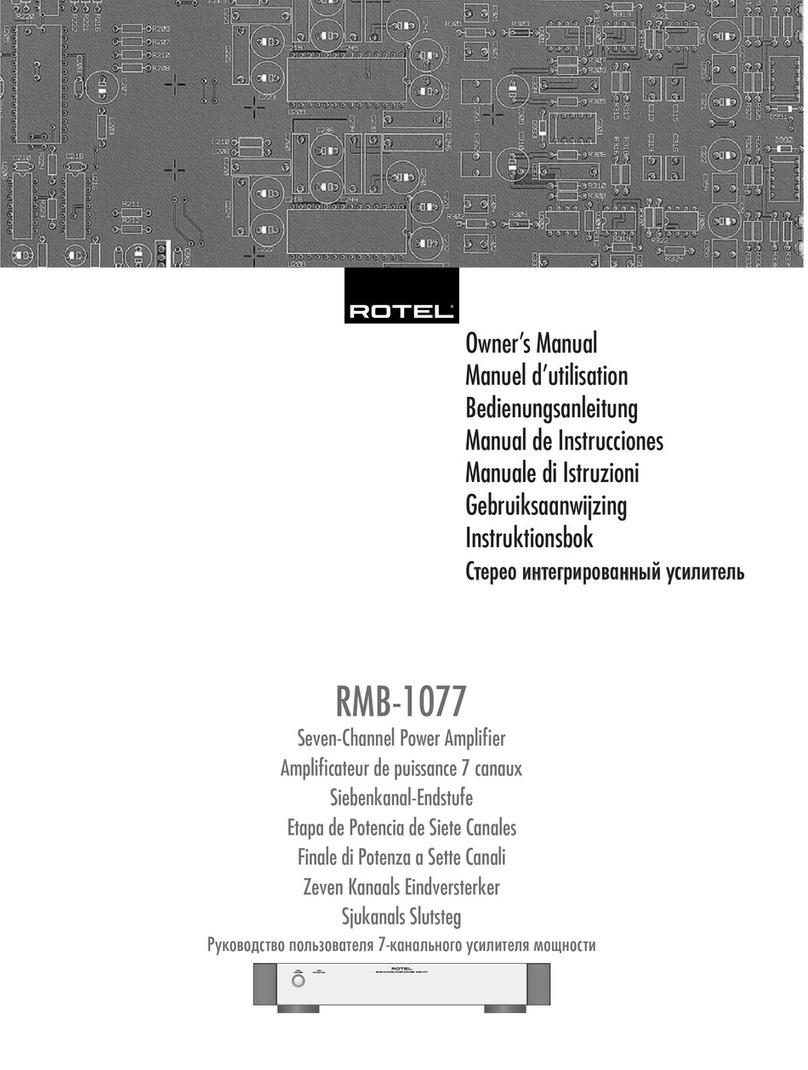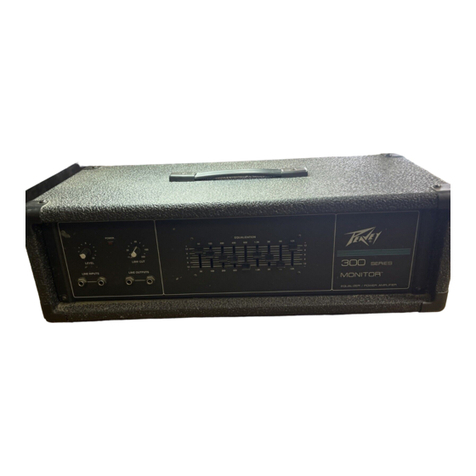TruetotheMusic
PZ-Pre User Guide
Radial Engineering Ltd.
TruetotheMusic
Radial Engineering Ltd. PZ-Pre User Guide
Notch Filter
The notch filter is designed to manage feedback by surgically re-
movinganoffendingfrequency whileleavingthe restof the sound
intact.Tofind whichnoteisgoingto feedbackfirst, playascending
scales or chords starting from your instrument's lowest note.
If, during your tests, you hear that a particular note is more prone
to feedback than others, set the NOTCH Q to the NORMALposi-
tion and slowly rotate the NOTCH control to see if you can dial
in the offending frequency. This process is sometimes referred
to as "notching out".
When you have found the position on the dial that corresponds
to the frequency feeding back, play and hold a chord or simply let
all of the strings resonate. Now, turn the LEVELcontrol up some
more and see what happens. If the same frequency is still on the
verge of feedback, try setting NOTCH Q to DEEP.
An important point when using the NOTCH filter is that the prob-
lem frequency will likely change each time you play in a different
venue or change instruments. So experiment and get familiar
with the NOTCH filter functions. This will make sound-check go
more quickly and will reduce the occurrence of feedback when
you are performing!
Setting the Notch Filter
1. Set the NOTCH Q switch to bypass.
2. Test by playing ascending notes on the lowest strings.
3. Focus in on the note that tends to feedback before the rest. If
necessary, increase the LEVEL control to produce a perpetual
feedback ring at this note's frequency.
4. Set the NOTCH Q switch to NORM.
5. While holding the note, turn the NOTCH control until you have
tuned the filter to the same frequency. The notch filter is tuned
when the note decays naturally without feeding back.
6. Increase the LEVEL control until the same note starts to
feedback and then back off the level a little.
7. If more gain is needed, you can switch the NOTCH Q to DEEP
and try increasing the LEVEL control some more.
TIP: At some point, turning up the instrument level will
cause uncontrollable feedback at many frequencies and is
an indication levels should be lowered.
1514
CONTROLLING FEEDBACK
The PZ-Pre gives you low-cut and notch filter tools to suppress
feedback and achieve the greatest amount of signal gain. This
concept is called gain before feedback. This section of the
manual will help you set up the PZ-Pre for maximum gain before
feedback.
To testfor feedback youshould bepositionedin thearea onstage
where you will be performing.Always test for feedback with your
amp, monitors and PA system turned on.
TIP: Feedback can be very unpleasant to listen to. The
MUTE footswitch can be used as a panic button in case of
uncontrolledrun-away feedback.Dampening thestrings with
one hand while you adjust the PZ-Pre controls is another
method to control feedback while testing.
Begin your feedback testing by increasing the LEVEL control to
the point where your instrument starts to feedback. Play your
instrument, move around on stage and experience the effect.
At this point, you will likely hear two types of feedback: feedback
when a specific note sounds, usually on the bass strings, and a
low frequency run-away resonance. The feedback from a spe-
cific note we will deal with later, using the notch filter. For now,
we will focus on removing the runaway low resonance with the
LO-CUT filter.
LO-CUT Filter
Thegoal forusingthe LO-CUTfilteris tobeabletostrum theopen
stringsloudand clearwithoutrun-away lowfrequencyresonance
feedback. This type of feedback can often be eliminated simply
by engaging the LO-CUT filter.
Try this by setting the LO-CUT control to the 80Hz position. In-
crease the volume and see what happens. If you get more of the
sameresonancefeedback,trythe 200Hzposition. Inthis position,
you can hear that more bass frequencies have been removed
from the signal but your instrument can have more gain before
the feeback starts.
Setting the LO-CUT Filter
1. Set the LO-CUT switch to bypass.
2. Perform this test by strumming open strings.
3. Slowly turn up the LEVELcontrol until low frequency feedback
starts to make the open strings resonate.
4. Set the LO-CUT switch to 80Hz.
5. While playing the open strings, continue to slowly increase
the LEVEL control to the point where low frequency feedback
re-occurs.
6. Turn the LEVEL control down a little from this point.
7. If more gain is needed set the LO-CUT to 200Hz and increase
the LEVEL control.
